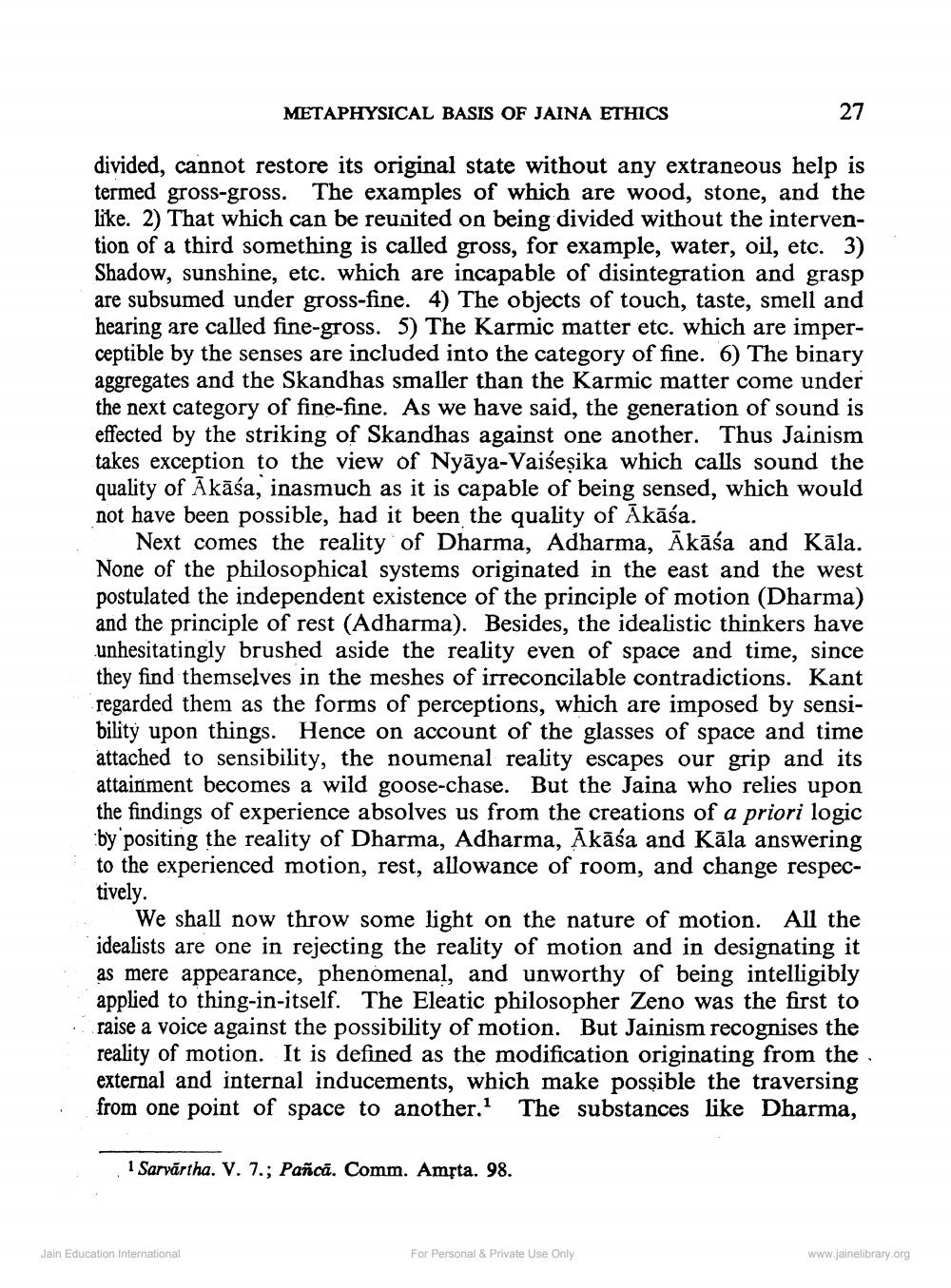________________
METAPHYSICAL BASIS OF JAINA ETHICS
27
divided, cannot restore its original state without any extraneous help is termed gross-gross. The examples of which are wood, stone, and the like. 2) That which can be reunited on being divided without the intervention of a third something is called gross, for example, water, oil, etc. 3) Shadow, sunshine, etc. which are incapable of disintegration and grasp are subsumed under gross-fine. 4) The objects of touch, taste, smell and hearing are called fine-gross. 5) The Karmic matter etc. which are imperceptible by the senses are included into the category of fine. 6) The binary aggregates and the Skandhas smaller than the Karmic matter come under the next category of fine-fine. As we have said, the generation of sound is effected by the striking of Skandhas against one another. Thus Jainism takes exception to the view of Nyāya-Vaiseșika which calls sound the quality of Akāśa, inasmuch as it is capable of being sensed, which would not have been possible, had it been the quality of Akāśa.
Next comes the reality of Dharma, Adharma, Ākāśa and Kāla. None of the philosophical systems originated in the east and the west postulated the independent existence of the principle of motion (Dharma) and the principle of rest (Adharma). Besides, the idealistic thinkers have unhesitatingly brushed aside the reality even of space and time, since they find themselves in the meshes of irreconcilable contradictions. Kant regarded them as the forms of perceptions, which are imposed by sens bility upon things. Hence on account of the glasses of space and time attached to sensibility, the noumenal reality escapes our grip and its attainment becomes a wild goose-chase. But the Jaina who relies upon the findings of experience absolves us from the creations of a priori logic by positing the reality of Dharma, Adharma, Ākāśa and Kāla answering to the experienced motion, rest, allowance of room, and change respectively.
We shall now throw some light on the nature of motion. All the idealists are one in rejecting the reality of motion and in designating it as mere appearance, phenomenal, and unworthy of being intelligibly applied to thing-in-itself. The Eleatic philosopher Zeno was the first to raise a voice against the possibility of motion. But Jainism recognises the reality of motion. It is defined as the modification originating from the external and internal inducements, which make possible the traversing from one point of space to another. The substances like Dharma,
1 Sarvārtha. V. 7.; Pañcā. Comm. Amfta. 98.
Jain Education International
For Personal & Private Use Only
www.jainelibrary.org




